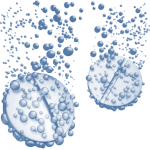Overview on Transferosomes: A Unique Novel Nanocarrier System
Sonal A Satpute, Shraddha T Vaidya, Vaishali A Patil, Priyanka S Alekari
Abstract:
Today, transdermal delivery technologies are becoming more and more significant. Although transdermal drug administration has significantly improved medical practice, it still hasn’t reached its full potential as a substitute for oral medication delivery and hypodermic injections. A number of novel technologies have been developed to deliver some significant medications transdermally. The outermost layer of the skin, the lipophilic stratum corneum, is being studied by physical and chemical means. The majority of transdermal medicines that have proved effective do so by utilising smaller lipophilic compounds, which have molecular weights of a few hundred Daltons. Transferosomes have become an effective technique for transdermal distribution of a range of therapies, including hydrophilic actives, bigger molecules, peptides, proteins, and nucleic acids, in order to get around the medications’ size and lipophilicity constraints. A wide variety of pharmacological compounds, including big molecules like peptides, hormones, and antibiotics, as well as medications with low penetration owing to undesirable physicochemical characteristics, can be delivered via transfersomes with significant potential. Creating the medication in a transfersome is one way to address these issues. Because of its extreme deformability and elasticity, a transfersome can fit through a pore that is several times smaller than its actual size. The characteristics of transferosomes, their preparation process, and various assessment metrics are covered in this article.
Keywords: Transdermal, Transferosomes, Phospholipid, Edge Activator, Vesicular.



